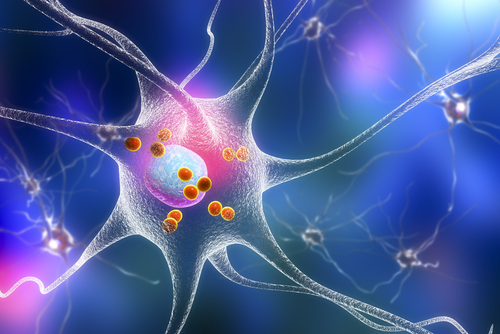microRNA Sequences Work as ‘Fingerprints’ for Early ALS Diagnosis, Study Says

microRNAs found in brain-derived exosomes — microscopic vesicles containing genetic material, proteins and fats shed by cells into the bloodstream — may be useful blood biomarkers to diagnose amyotrophic lateral sclerosis (ALS), a study reported.
Its researchers suggested that eight microRMA sequences in exosomes that originate in the brain could serve as “fingerprints with unequivocal signatures of neurodegeneration” on blood tests, and possibly allow this disease to be detected before symptoms are evident.
Their study, “An miRNA fingerprint using neural-enriched extracellular vesicles from blood plasma: towards a biomarker for amyotrophic lateral sclerosis/motor neuron disease,” published in the journal Royal Society Open Biology.
Diagnosing ALS can be complex. It is usually done by eliminating alternative diagnoses, and based on results of complex exams, such as electromyograms, nerve conduction studies, muscle biopsies, magnetic field imaging, and biofluid analyses.
Delays, often stretching more than a year, slow access to treatments that work against disease progression, and affect the testing of new therapies.
Previous attempts to find ALS biomarkers that can aid diagnosis, prognosis, and analysis of therapy effectiveness failed to identify those that could be sufficiently validated for use in clinical care.
Exosomes are a type of extracellular vesicle, an inclusive term for cell-derived material, that are filled with such biological cargo as fats, DNA, RNA, and proteins.
Among the genetic material carried by extracellular vesicles are microRNAs (miRNAs) — short RNA sequences that regulate gene expression within cells. Of note, gene expression is the process by which information in a gene is synthesized to create a working product, like a protein.
miRNAs carried by these vesicles have been identified as potential biomarkers for other neurodegenerative diseases, including Alzheimer’s and Parkinson’s.
Scientists with Brain Chemistry Labs, a nonprofit research institute in Wyoming, set out to identify ALS biomarkers in blood-circulating extracellular vesicles, including exosomes, derived from nerve cells of the brain.
The vesicles were extracted from blood samples taken from 10 ALS patients and 10 healthy individuals serving as controls. At the time of the analysis, patients were enrolled in a Phase 2a clinical trial (NCT03580616) testing the tolerability and efficacy of L-Serine, a naturally occurring dietary amino acid, as an ALS treatment. The institute is a collaborator on this trial.
Samples from a second group of 10 ALS patients and 10 controls were independently analyzed, using the same methods, and results compared for repeatability to support the method.
By targeting a specific protein found on the surface of exosomes, researchers were able to specifically isolate and analyze nerve cell-derived exosomes from the 40 blood samples.
A total of 101 species of miRNA were found to be present at different levels between the ALS and control blood samples. Researchers then selected 34 of these miRNAs for further analysis; each had been previously linked to neurodegenerative diseases.
“We did not choose all the significant miRNA sequences identified … because we recognize that individual miRNA should be fully evaluated using a more quantitative approach in order to understand their biological relevancy,” the researchers wrote.
Blood levels of these 34 miRNAs were also tested in the second patient-control group to see if the same alterations in their levels were again evident. Again, for eight miRNA sequences, they were.
“In two separate experiments … we found eight miRNA sequences that were significantly and consistently different between ALS/MND [motor neurone disease] patients and healthy controls,” the researchers wrote.
“We suggest that these miRNA sequences, singly or in combinations, can confirm the diagnosis of ALS/MND based on standard clinical criteria and may allow ALS/MND to be diagnosed in pre-symptomatic individuals, rapidly speeding diagnosis and treatment,” the researchers wrote.
This finding could be “a game changer: the methods we have pioneered will lead to the ability to rapidly diagnose ALS from a single blood draw, compared to current scientific measures where patients may have to wait for over a year for a confirmed diagnosis,” Sandra Banack, a senior scientist at Brain Chemistry Labs and the study’s lead author, said in a press release.
Added Rachael Dunlop, a study author and research fellow at the Labs: “This new genetic fingerprint may open up opportunities for novel drug discovery. Given the lack of treatments for ALS, physicians and researchers understand the importance of having a new biomarker to help in assessing the effectiveness of new drug candidates, and in enabling patients to receive experimental treatments at an earlier stage of the disease.”






